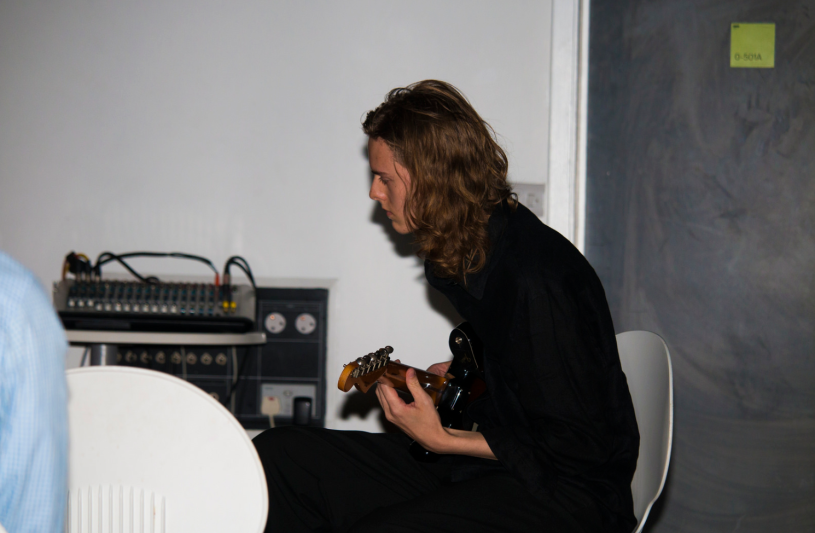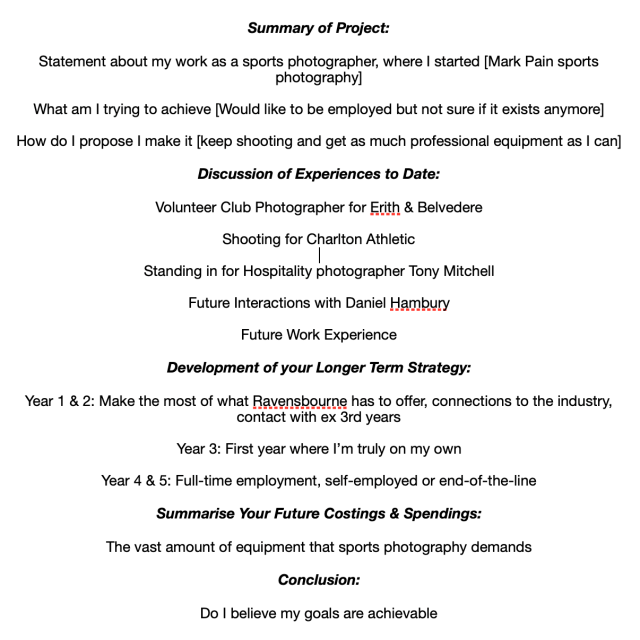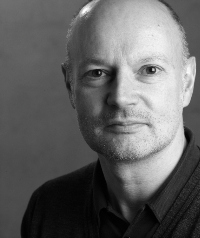Initial Mindmap
Below is a mind map of some ideas I’ve had recently for my Cultural Geography project. I’ve got a few ideas on the go after the first two lectures but I’m struggling with what to say.



Initial Mindmap
Below is a mind map of some ideas I’ve had recently for my Cultural Geography project. I’ve got a few ideas on the go after the first two lectures but I’m struggling with what to say.

Subjects for my Saturday Supplement
This post is an update about where I am with finding a guitarist for my Saturday Supplement shoot.
 The first person I contacted was a friend of mine Billy Leach. When I approached him he said he would be up for the shoot, however, I forgot about his university commitments and this meant that he would only be available between 3PM and 4PM which I might not be able to get all 9 shots done in that time.
The first person I contacted was a friend of mine Billy Leach. When I approached him he said he would be up for the shoot, however, I forgot about his university commitments and this meant that he would only be available between 3PM and 4PM which I might not be able to get all 9 shots done in that time.
I’ve tried messaging another friend of mine, Will Nicholls but he studies at the same place as Billy so he will probably have the same time constraints. I’d imagine Will would definitely be up for the shoot if Billy was there. So at minimum, I do have one or two guitarists. However, I decided to continue hunting for ones who would be available for the entire shoot.
Gabriella said that she had a friend who would be available for the shoot, to which I’m currently waiting to get contact in from back from her so I can reach out.
I’m also trying to reach out to my cousin who has started to put covers and his own work up on Youtube so a shoot like this would be great for his profile.

Cultural Geography Home Task One: Nature
I think that when the word natural is used we instantly assume that a product, let’s say food it hasn’t been processed. So if we brought natural eggs, we’d expect the hens to be brought up on a proper farm and be treated humanely. They aren’t bred to just lay eggs.
If obesity was described as a genetic disease then as a doctor we would possibly feel less judgemental. As wrong as it sounds, we’re always judgemental towards people who suffer from obesity ’cause it is always viewed as a choice. Whereas if it was viewed as genetic, we wouldn’t really be able to view it as a choice.
Cultural Geography Lesson Two: Nature
In the most recent lesson of Cultural Geography, we had a very thought-provoking lesson that made use reconsider our definitions of nature. It made us ask questions like is Nature & Natural the same or different things?
One interesting thought that started the talk was the thoughts of Steve Hinchliffe. He said the following:
I think this is the perception of nature vs society, it is felt that society is not in its natural habitat, it is moving from space to space and pushing the natural world away. He follows on by saying
 We were also shown a segment from the 2005 documentary Our Daily Bread. In this video, the chickens are treated as objects, the male ones are taken off the production line as they are no good for what the end goal is. This isn’t farming in the traditional sense. It doesn’t look natural but this is still the sense of nature, they are being raised.
We were also shown a segment from the 2005 documentary Our Daily Bread. In this video, the chickens are treated as objects, the male ones are taken off the production line as they are no good for what the end goal is. This isn’t farming in the traditional sense. It doesn’t look natural but this is still the sense of nature, they are being raised.
Another interesting piece of moving image that we saw was a Hyper-lapse of a nature documentary. There are loads of examples in shows like Planet Earth, Blue Planet etc. where we see nature sped up. The clip we were shown had loads of different flowers grow in seconds, this would’ve taken months to create. Not only months to shoot but months to put together. It was essentially a composite image, every flower would’ve been shot differently and then comped together, it all would’ve been shot in a studio. The only natural thing with this piece is the background.
One final thing I took from the presentation about nature is about parks. Greenwich Park is one of my favourite spaces. I love to go for walks there, when I’ve been stuck for ideas, I walked through what I’d called nature, but is it natural? Greenwich Park would have plans, for the paths, the flowers, the trees. Nature is not taking it’s course.

Cultural Geography Lesson One: Introduction
For the first lesson of Cultural Geography, we were given an introduction into what we’re expected to take from these lessons.
The aims are:
We were also reminded that this is a sample unit, where we will get a taste of different avenues of research.
On the 21st of November, we will have the formative assessment for our essay. To which we have to come with a research diary, which I’m gonna do with WordPress. It will mainly consist of a series of weekly tasks, it will also contain things that I have found myself.
This will form the basis of the artifact that I choose to write about for my summative assignment. Which is a research-based academic text of 2000 words. It has to be well researched so my diary must be strong with a wide range of references.
The following words will be picked up heavily in this unit:
Nature, Culture, Landscape, Place, Space, Mobility and Elements, Ethnography
 Simon showed us through his photography work and he explained how it was a piece of cultural geography. One piece of work I liked was the “Smell of Bitumen” The image on the left from the series shows a Primary School which was built 100 yards away from one of the largest Oil Refineries in the UK. You can imagine the smell that these kids get every day, it isn’t right.
Simon showed us through his photography work and he explained how it was a piece of cultural geography. One piece of work I liked was the “Smell of Bitumen” The image on the left from the series shows a Primary School which was built 100 yards away from one of the largest Oil Refineries in the UK. You can imagine the smell that these kids get every day, it isn’t right.
Simon shot this from a Cherry Picker to show the true connection between these two places.
This did give me an initial idea of writing about Canary Wharf, but I wasn’t fully sure what to say about it.

Structure of my report
Below is how I’m intending to structure my Career strategy report. I felt the best way to start this was to bullet-point key moments that I could write about in each section.


To Advance: Your Pictures, Your Copyright
 After the talk about insurance, we had another talk. This time from advertising and product photographer Nick Dunmur. Nick is also the Business & Legal advisor at the AoP so copyrights and photographers’ rights really is his bread and butter.
After the talk about insurance, we had another talk. This time from advertising and product photographer Nick Dunmur. Nick is also the Business & Legal advisor at the AoP so copyrights and photographers’ rights really is his bread and butter.
It is the the right to prevent the copying of an image. Before 1988 copyright was automatically with the client. So this meant that the images we’re only owned by the client not the photographer. Now this only applies if it stated in a contract. If it isn’t mentioned then the photographer is the owner of the copyright.
The only instance where a photographer won’t own the images is in a buy-out.
Copyright is the physical expression of an idea, but not for an idea itself.
There are certain cases where there aren’t cases of copyright.
*Work must be appropriately credited
Another thing which was discussed was exclusivity. You can see exclusive rights to an image to a client, this is known as a buy-out. As photographers we should only agree to a buy-out if a large sum of money is offered by the client. When we give exclusive rights to a client, we no longer own the photograph.
It is highly encouraged to sell an image was a non-exclusive licence. This way our image can be passed around to numerous clients, 6 clients might not get the same sum as a buy-out but it will get your name out further.
Another important aspect of the talk is the use of social media. Nick said that he would never upload an image to Instagram that has commercial value.

To Advance: Insurance
 Last Thursday, we had a visit from an Insurance Broker, William Carson & Co Ltd. They have been associated with the Association of Photographers for 35 years. The broker insurance deals for both photographers and production companies.
Last Thursday, we had a visit from an Insurance Broker, William Carson & Co Ltd. They have been associated with the Association of Photographers for 35 years. The broker insurance deals for both photographers and production companies.
 The talk was hosted by Tom Carson who is a board member of the AoP and has over 35 years experience with the photography and film industry. Most of the talking was done by Matthew Whinney, the company director and has underwritten and insured media and film clients for the last 9 years.
The talk was hosted by Tom Carson who is a board member of the AoP and has over 35 years experience with the photography and film industry. Most of the talking was done by Matthew Whinney, the company director and has underwritten and insured media and film clients for the last 9 years.
The first thing they mentioned is about our household insurance, I’ve been in the boat myself where I’ve recently purchased a Canon 5D Mk.iv and my dad has said it’s covered by our household insurance, but is it?
The honest answer is not straight forward. We have to get our parents to check the small print of their policy, Aviva the UK’s largest insures says this on their household policy:
So it really is better to be safe than sorry and just get the equipment insured on it’s own policy. You have to take into account the knock effects, what happens if your equipment takes 3 weeks to repair?, what happens if replacement aren’t available? How would you fulfill a job? can we afford these delays?. Bills will still have to be paid and revenue would be lost.
Hire fees will not be covered by our household insurance.
The biggest, most important piece of insurance. Liability claims can range from 000’s to millions of pounds. There are two types of liability, Public and Employers.
Public covers damage and injury to third parties. Essentially if your doing a shoot on location and a member of public trips over your light or one of your bags, you will be covered if they sue you. This especially applies for Sports photography. If your going to photograph Non-League to Championship football you need Liability Insurance which covers you for £2.6 million. If your gonna photograph the Premier League, you need a £5 million premium.
As mentioned this doesn’t just cover injuries. If your shooting in a studio that you’ve rented and there is a fire, Public Liability will cover you.
Employers Liability covers people who work for a company. It is a legal requirement for an employer to have the correct insurance. The legal minimum amount of cover is £5 million. Most offer £10 million as standard. If your an assistant for a photographer, you should make sure that they have Employers Liability insurance. Say if you assisting in the studio and a light falls on you, if you feel they are responsible you can sue, and it will come out of their employers liability.
We we’re told about an ongoing case on employers liability insurance. A photographer and an assistant we’re doing a shoot at a quarry. The assistant entered an area that they shouldn’t have gone and fell, the assistant is now paralysed and needs 24hr care. The case is still going on about who should be paying.
 A strand of insurance that I didn’t know about was production insurance. Picture it, you’ve been commissioned to shoot a high end client, lets say you have a budget of £100,000. Lets say this is the following expenditure for the shoot:
A strand of insurance that I didn’t know about was production insurance. Picture it, you’ve been commissioned to shoot a high end client, lets say you have a budget of £100,000. Lets say this is the following expenditure for the shoot:
What happens if you need a reshoot, lets say the digital images are stolen, lets say the model is ill, or the location is damaged.
Can we afford to pay again, thats what Production Insurance is for.
 This covers claims against the photographer. One of the most common Professional Indemnity cases is against Wedding Photographers. There are two common claims, claims against quality of images and social media postage. We’ve all heard horror stories of sub-par images of the happy couples big day but there has also been cases where the client has come back from their honey-moon and seen their images be used in promotional material before they’ve been sent to them.
This covers claims against the photographer. One of the most common Professional Indemnity cases is against Wedding Photographers. There are two common claims, claims against quality of images and social media postage. We’ve all heard horror stories of sub-par images of the happy couples big day but there has also been cases where the client has come back from their honey-moon and seen their images be used in promotional material before they’ve been sent to them.

Saturday Supplement Mood-board

Last week, I did a blog post where I shared my sketches of images that I was planning to shoot for my supplement.
Thinking of ideas was actually a lot tougher than I expected, with some of the images I sketched, they started to feel repetitive. To counter this, I decided to assemble an album on Pinterest of images I found on to act as inspiration, I then took some of those images to create my mood-board.


Guardian Weekend Supplement, Issue 37, 13th October
This time I decided to focus just on Profile portraits, there were two images that I put in which I think are a cross of fashion and profile portraits. This weekend I think I’m gonna go and look at the Times & the Telegraph for their supplements, just to get something different.